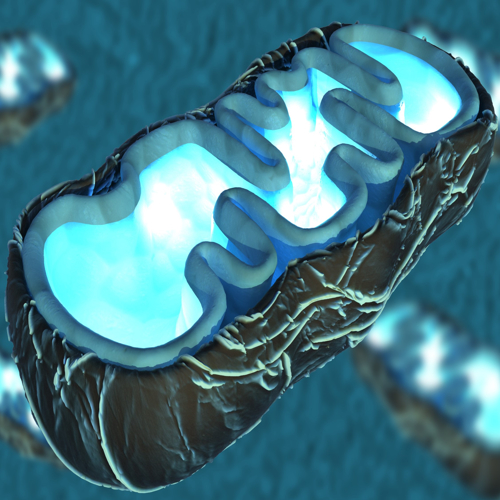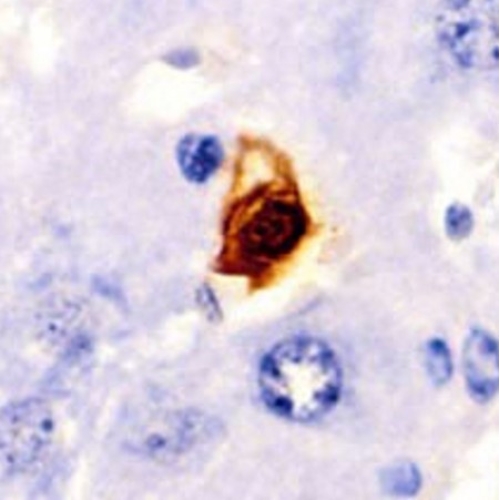Ageing is a natural, steady decline in body function over time. As people age, they lose bone and muscle strength. Hormones change, blood pressure shifts, and immunity weakens. These changes raise the risk of diseases like diabetes, heart problems, and brain disorders.
Scientists have found twelve main signs of ageing. These include DNA damage, telomere shortening, loss of protein balance, and mitochondrial problems. Among them, mitochondrial dysfunction plays a big role. It speeds up ageing and pushes cells into decline.
Mitochondria are often called the cell's power stations. They turn nutrients into ATP, the cell's energy source. Besides energy, mitochondria also control cell survival, signals, and balance. When they fail, cells face stress and stop working well.
How mitochondria produce energy and manage stress
Mitochondria break down glucose, fats, and amino acids. They feed these into the TCA cycle to make energy. During this process, they create electron carriers like NADH and FADH2. These carriers pass electrons to the electron transport chain.
The electron transport chain pumps protons and makes an electrochemical gradient. Protons flow back to create ATP. This energy keeps cells alive and active.
But this process also produces reactive oxygen species (ROS). Small amounts of ROS help cells signal and adapt. Too much ROS damages proteins, fats, and DNA. This damage leads to cell ageing and loss of function.
Mitochondria also handle calcium. Calcium levels help regulate energy production and other cell processes. When mitochondria fail to manage calcium, it disrupts energy balance. This creates more stress and pushes cells toward ageing.
Mitochondria send signals to the nucleus
Mitochondria talk to the nucleus through signals. These signals adjust gene activity and help cells react to stress or energy needs. Mitochondrial metabolites, such as acetyl-CoA and α-ketoglutarate, play a big role.
These molecules shape how DNA wraps and unwraps. When DNA opens up, certain genes turn on. When it tightens, they stay off. This control helps cells adapt to conditions and maintain health.
α-Ketoglutarate supports cell energy and protein building. Its levels drop with age. Studies show that supplementing it in mice improves fertility and reduces ageing signs. In humans, it might even reverse biological age markers.
Acetyl-CoA also affects gene control through acetylation. This process opens DNA and helps cells stay active. With age, acetyl-CoA levels change. In brain cells, lower acetyl-CoA ties to more senescent cells and weaker memory.
By managing these molecules, mitochondria help control ageing speed and cell function.
Amino acids and mitochondrial health
Amino acids, especially glutamine, are vital for cells. Glutamine fuels growth and reduces stress. Without it, cells age faster and lose function.
Some studies show that blocking glutamine use can clear aged skin cells. This can improve skin health and make it look younger.
Branched-chain amino acids (BCAAs) also play a part. They affect energy production and gene regulation. In flies, cutting BCAA intake extended lifespan and boosted health, especially in females.
BCAAs can control how cells sense nutrients and adjust growth. They also affect how mitochondria work and support metabolism. By adjusting amino acid levels, it may be possible to slow ageing.
Mitochondrial stress and ageing signals
When mitochondria face damage or stress, they send signals to the nucleus. This is called retrograde signaling. It helps cells adjust metabolism and survive tough conditions.
During stress, mitochondria release more ROS. While mild ROS levels can help protect cells, too much can lock cells into a senescent state.
Cells have systems to control ROS, like antioxidant proteins. These systems weaken with age. As a result, damage builds up and pushes cells deeper into dysfunction.
Certain proteins, like SIRT2, help manage mitochondrial stress. In old cells, lower SIRT2 activity increases ROS and vascular problems. Restoring this balance can help reduce ageing signs in blood vessels.
Mitochondria and programmed cell death
Mitochondria can trigger cell death in different ways. They control apoptosis, which removes damaged cells cleanly. They also take part in ferroptosis, driven by iron and lipid damage, and pyroptosis, linked to inflammation.
When mitochondria release signals for apoptosis, they help maintain tissue health. But in ageing, faulty signals can lead to chronic inflammation instead of clean removal.
Ferroptosis involves iron buildup and ROS. In liver cells, ageing speeds up this process. Blocking ferroptosis reversed liver ageing signs in mice. Iron buildup can also cause fibrosis and worsen ageing in blood vessels and kidneys.
Pyroptosis uses gasdermin proteins to create holes in cells, leading to death. In ovaries, blocking this process delayed ageing and kept tissue healthy.
By understanding these pathways, scientists can explore new ways to reduce ageing effects.
The role of autophagy
Autophagy clears damaged parts and keeps cells clean. Mitochondria play a central role in this process.
During autophagy, damaged items go into vesicles. These vesicles merge with lysosomes, where contents break down.
With age, autophagy slows. Damaged mitochondria pile up and create more ROS. This pushes cells into senescence and tissue decline.
Boosting autophagy has shown promise in delaying ageing. It helps restore balance and remove harmful materials.
Mitochondrial quality control and stress responses
Mitochondria have a special stress response called the mitochondrial unfolded protein response (UPRmt). When mitochondria detect protein damage, they send signals to the nucleus to produce protective proteins.
Mild mitochondrial stress can activate UPRmt and extend lifespan. But severe or chronic stress can worsen ageing.
For example, moderate defects in mitochondrial energy production in worms and flies led to longer lives. This suggests that small, controlled stress might strengthen defenses.
However, too much stress can deplete energy and harm stem cells, speeding up ageing. Balancing this response is key to healthy ageing.
Metabolite signals in ageing
Mitochondrial metabolites link energy use to gene control. These include α-ketoglutarate, acetyl-CoA, citrate, and fumarate.
These molecules affect DNA methylation and histone modifications. By changing these marks, they adjust which genes are active.
In experiments, α-ketoglutarate supplementation extended lifespan in worms, flies, and mice. It reduced inflammation and supported healthy ageing.
Acetyl-CoA supports chromatin opening and gene activation. Its decline ties to memory loss and increased senescence.
Citrate also showed benefits. In flies on high-calorie diets, extra citrate extended life and improved memory.
These findings suggest that targeting mitochondrial metabolites can shape ageing.
Keeping mitochondria healthy
Mitochondria guide ageing through energy production, stress responses, and gene control. Keeping them healthy can help delay ageing and improve life quality.
Ways to protect mitochondria include healthy diets, regular exercise, and reducing excess stress. Nutrients that support mitochondria may slow functional decline.
Understanding mitochondria opens new doors in anti-ageing science. By focusing on these cell powerhouses, we may unlock ways to age better and live healthier lives.
The study is published in the journal Cell Communication and Signaling. It was led by researchers from Inner Mongolia University.







